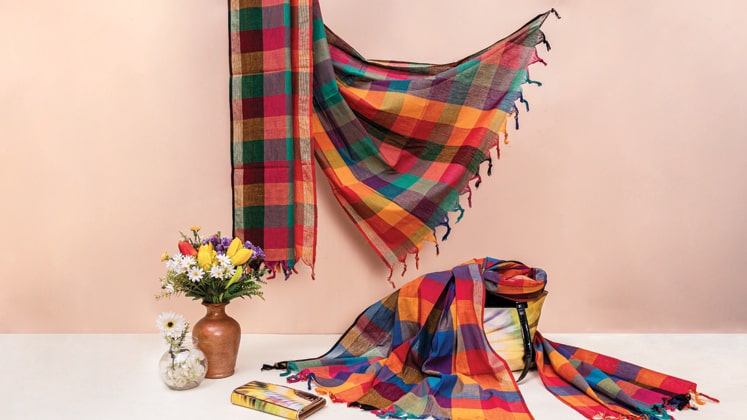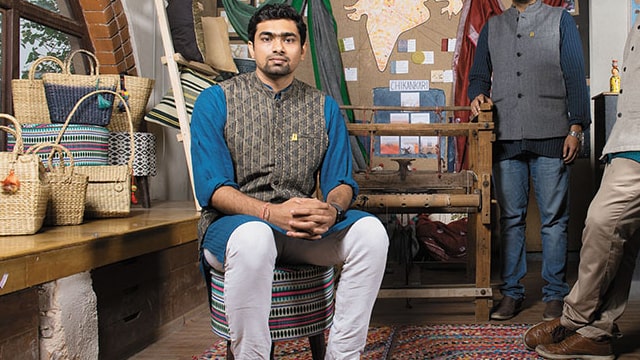News and Features
How start-ups in handlooms and handicrafts are helping the industry evolve
16 January 2020
Apparel Resources

Culminating from a history that predates five millennia, the handloom and handicraft industry is one that has continued to be the backbone of the rural economy for generations, second only to agriculture. India harbours around 7 million artisans in the country, practising more than 500 types of crafts like metal engraving, zari, zardosi, teracotta, stone carving, phulkari, wood inlay chikankari, wooden toys, blue pottery, kutch embroidery – the list goes on. Infusing colours and their own individualistic techniques, these art forms differ from region to region, taking on the characteristics of their surroundings and catering to the needs that made their genesis imminent.
Scope of the Handloom and Handicraft Industry in India

One of the largest exporters of handlooms and handicrafts in the world, India plays a consequential part in spreading the reach of the hardwork of these local artisans to the world with exports valued at US $ 355.91 million in FY of 2017-18. During April-October 2018, the exports stood at US $ 199.42 million.
Speaking on the immense potential of the industry, Mansi Gupta, Founder and CEO, Tjori, says, “In the last 5-10 years, the industry has experienced a major shift. Where once artisans could only access the market through exhibitions, thereby lacking encouragement due to limited audience and dearth of business, now having a growing market with Indians, especially the modern urban women, who choose to buy home-grown products makes them stand out in a crowd.”

“The huge scope of the US $ 32 billion industry lies in the fact that India has always been a huge exporter and a hub for production of handicrafts and handlooms. Being such a large cotton producer, we find the production backward integrated. The shift and perception of consumers to wear handcrafted, non-chemical, organic clothing has come a long way in creating rampant demand,” she affirms.
Struggles and Solutions
To combat the informal nature and low education background of the artisans, there are a plethora of home-grown solutions looking to get mobilised into an efficient working organisation.“We have 28 micro-entrepreneurs that go by the name of Cluster Champions, skilled by our team to use our own mobile application technologies and to understand the quality control measures. We want to teach the artisans to maintain their authenticity, while still providing contemporary designs which are much more relevant today,” says Maneet Gohil, CEO, Lal10.

Another issue plaguing the community is the breakdown of the historic artisan–consumer relationship and the increasing urbanisation and globalisation of markets for crafts. Artisans have difficulty in understanding how to tailor their products to changing demands as there is little to no interaction with the actual buyers of the product.
This is where a brand comes into play. “We partner and hire top-notch talent in textile design, fashion design and management to liaison at the cluster level. Our team of in-house textile designers defines yarn compositions, while our fashion designers lay out the latest patterns and silhouettes for designing purposes. We train and upskill our artisans regularly with our workshops every month on new textile handloom weaving techniques developed by us and also on fashion design trends and colour palettes that appeal to the global and Indian markets,” explains Suren Chowdhary, Co-Founder, Inde'Loom.

The Brighter Side
Start-ups in this sector have brought the industry to a milestone where crafts are no longer limited to branded stores like Fabindia and Anokhi, but artisans can themselves reach out to customers through various online marketplaces, or become an integral part of the designing and production for brands like Jaypore, Tjori, Inde’Loom and BhashaBharat, to name a few.
However, along with alleviating the struggles of the artisan community, these start-ups have their fair share of hurdles to overcome. “The challenges are across the value chain of production and supply. We have particularly dealt with the lack of standards in quality, highly fragmented craft processes, high working capital investment and dead inventory management. The industry is plagued with archaic and time-taking processes rather than modern prototyping infrastructure,” says Anupam Arya, Co-Founder and VP, Fabriclore.

Despite the challenges, every brand is growing by leaps and bounds. With Lal10 growing 20-25 per cent month-on-month, Inde’Loom posting a revenue of Rs. 98 lakh in FY ‘19 and Tjori closing the last fiscal at Rs. 5 crore, the raging success of these brands has pushed them to consider expansion, be it in terms of retail presence, product assortment or capturing the international market.
Comments

